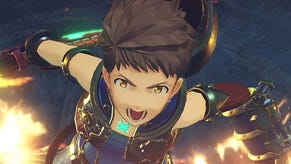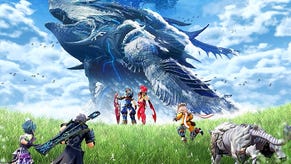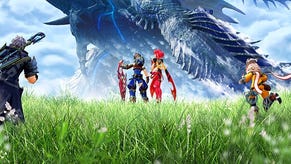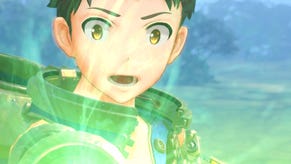Is Xenoblade Chronicles 2 too ambitious for Switch's mobile mode?
Impressive when docked but portable play has issues.
It's been a remarkable year for Nintendo's Switch and Monolith Soft is ensuring a strong finish with Xenoblade Chronicles 2. Building on the technology that powered Xenoblade X on the Wii U, this new game expands upon its engine in numerous ways enabling cool new visual effects in the process, but this ambition is met with unexpected drawbacks that detract from its overall presentation, including the one of the lowest recorded rendering resolutions we've seen on record. Clearly, the developers have walked the tightrope here in terms of balancing new features with the hardware limits of the Nintendo hybrid and we're not entirely sure that it's fully paid off.
Technological challenges apart, Xenoblade 2 still delivers in many respects, delivering a massive world to explore with the freedom the series has become known for - but this time, it's not evident from the outset. Unlike the previous game, Xenoblade 2 is focused on narrative and the first hour of the game is designed to pull players into that story. It works and by the time you arrive in the first massive open area, you have a real objective driving you forward.
And what a world it is! Xenoblade 2 is a beautiful game in many ways, with lands stretching far into the distance, delivering an epic sense of scale. Exploring islands and cities suspended above the clouds channels a feeling we've not felt since we played Skies of Arcadia on the Dreamcast. It's immediately tempting to explore its outer boundaries, but it's when looking out across the game's expansive landscapes that the first major issue becomes evident - image quality.
As a reminder, Xenoblade X on Wii U - which serves as the basis for Xenoblade 2's engine - runs at a native 720p. For Switch users playing docked to your flat panel, resolution remains at that same level, despite reports of dynamic resolution scaling. Muddying the waters somewhat is a somewhat extreme form of anti-aliasing. A temporal solution is in place, effectively eliminating aliasing but introducing serious blurring and motion artefacts in the process. In certain scenarios, the impression is of a higher overall resolution, but all pixel counts we've carried out here resolve at 720p. The takeaway here is interesting: while the base resolution is the same as Xenoblade X, TAA helps to clean up the image. It's blurrier overall, but traditional aliasing artefacts are held in check.
However, everything changes when playing in handheld mode and image quality takes a nose dive. Unlike docked mode, playing on the go sees the developers deploy a dynamic resolution solution. The results range from 552p or so to 432p and even as low as 368p in some cases. There are probably other values in there as well but it's clear that this is not a game that ever comes close to reaching the native resolution of the Switch's integrated display. In fact, this is one of the lowest resolutions we've pixel counted since the PlayStation Vita era.
What's worse, a strong sharpening filter is used here on top of the low resolution and the temporal anti-aliasing, resulting in a messy image overall. There's evidence of this filter in docked mode too but it's much stronger when playing in mobile mode, introducing nasty edge ringing everywhere. There's no doubt about it: Xenoblade 2 has the worst image quality we've yet seen in a Switch title running in handheld mode.
Bearing in mind how the Switch excels as a phenomenal portable, this is undoubtedly a real problem - and that's a shame as the overall improvements made to the engine are mostly excellent, and the presentation is clearly enhanced over Wii U's Xenoblade Chronicles X. The developers have really pushed the GPU here, introducing per-object motion blur, which looks particularly pleasing in the game's cutscenes. Animation is excellent, and the user of specular highlights in rainy scenes can also look great. Another impressive addition is the cloud simulation. The team has devised a method for rendering clouds which helps give them proper volume both above and below. Further exploration of the world reveals further improvements: water reflections are much improved over the last game and now make use of screen-space reflections, offering up a big upgrade over Xenoblade X's static cube maps.
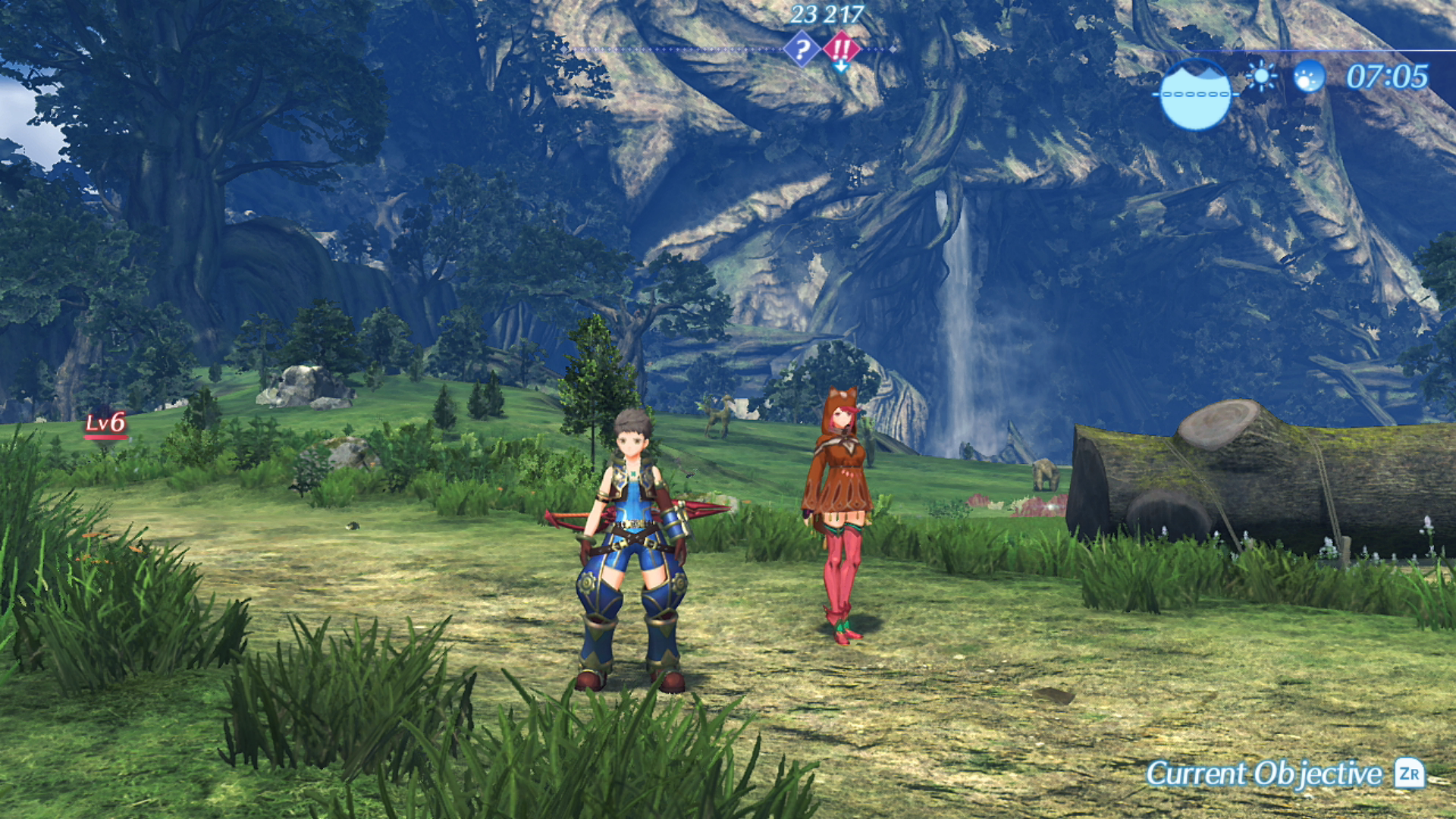
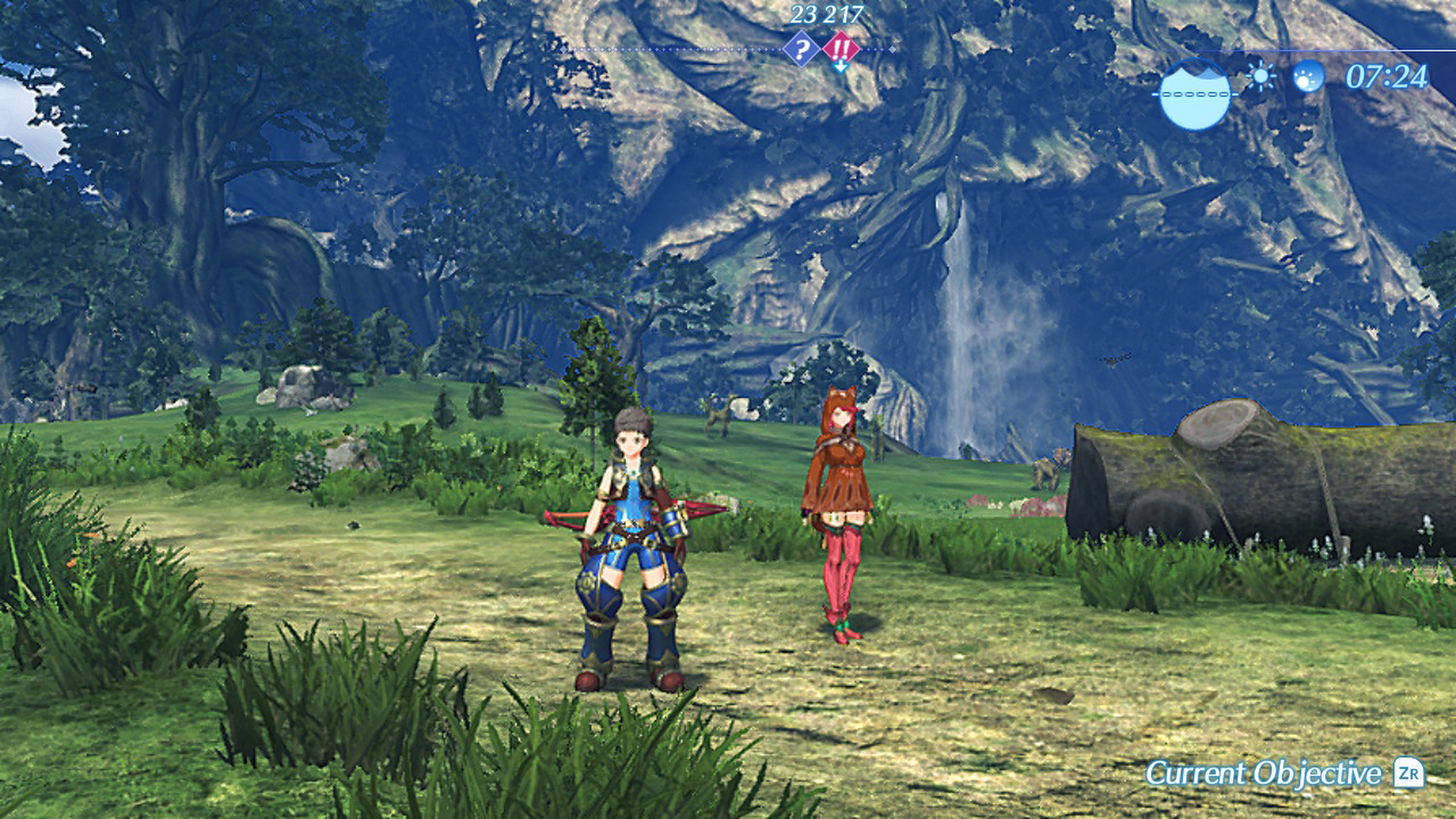
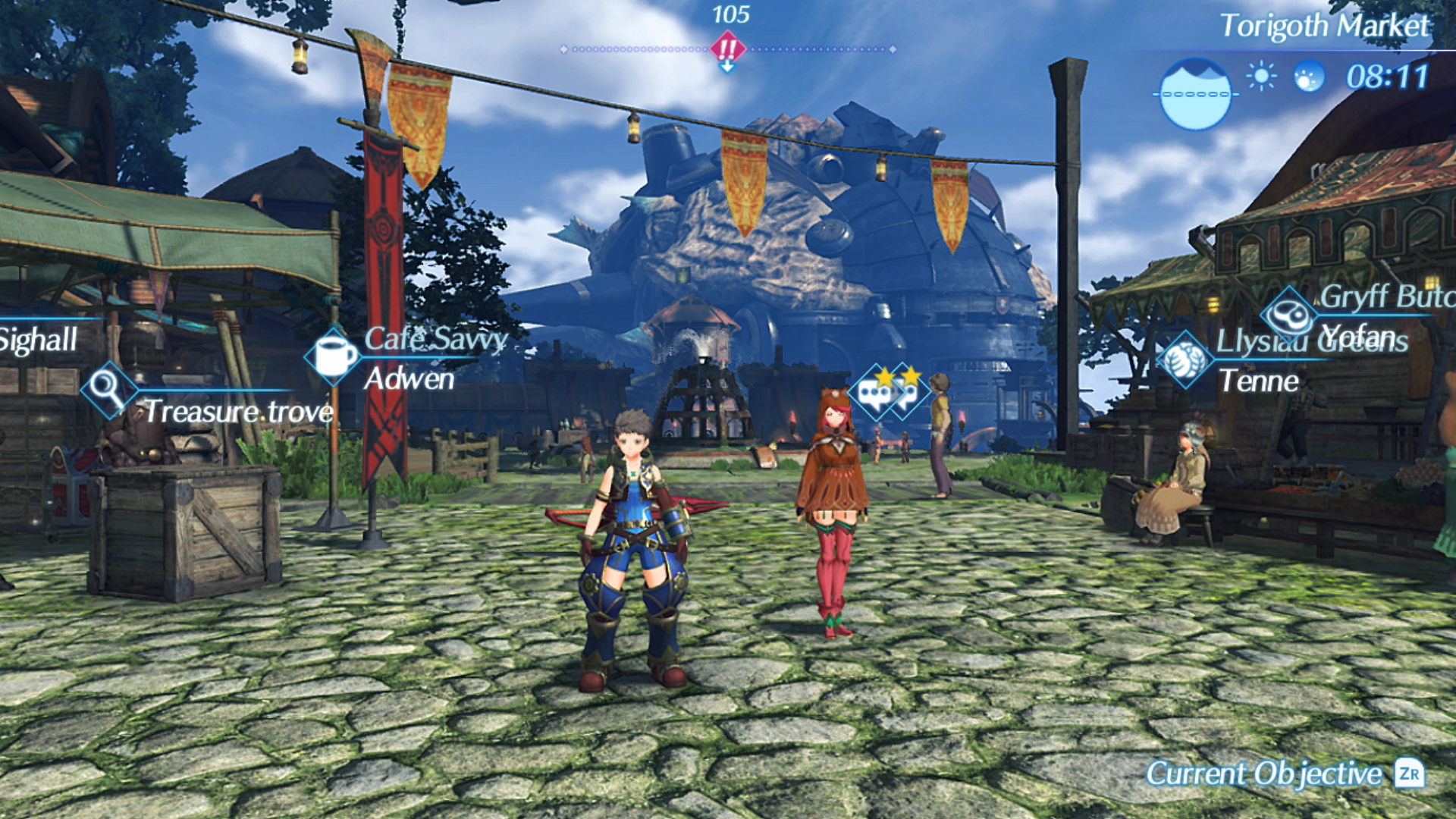



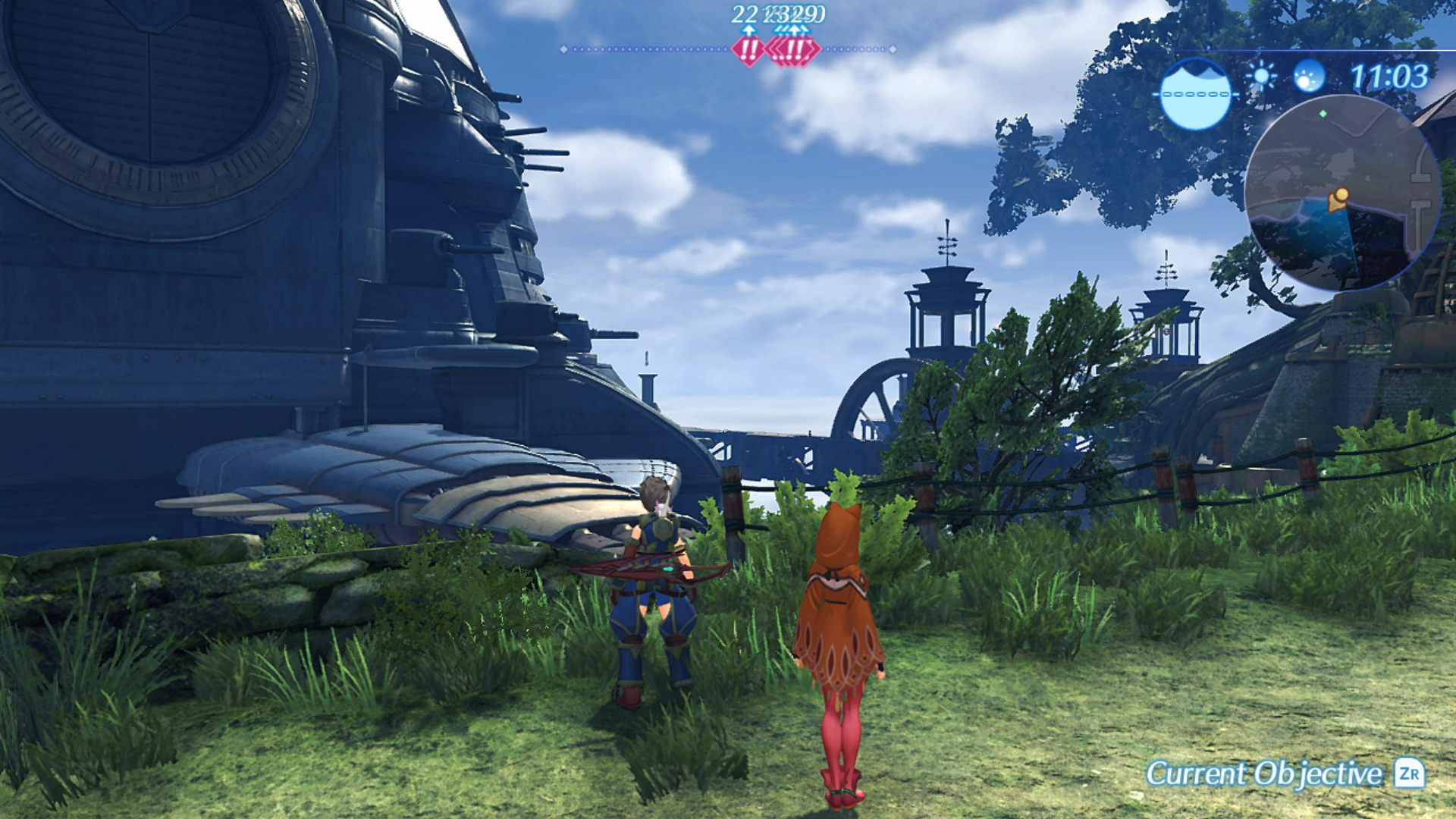

The density and quality of rendered foliage is also improved with plants now taking on realistic specular highlights visible while exploring the world. Unfortunately, none of the foliage can react to your character but at least it looks nice. The draw distance is acceptable as well, but pop-in is noticeable while exploring larger plains. Again though, it's a big upgrade over the last game.
The quality of materials also receives a noticeable overhaul since Xenoblade X, with light interacting more correctly over materials - metal reflects, while wood takes on a more diffuse look. Ambient occlusion is also implemented well. When standing outside of direct light, there's a diffuse contact shadow present behind the character and in the nooks and crannies. But this is the Xenoblade X engine at its core and some elements remain unchanged. For example, shadows act much as they did previously - they are present and do cast upon your character and large objects in the environment, but despite the presence of a day/night cycle, the shadows remain fixed in place, disappearing altogether when night kicks in.
On the flipside, collision detection is now more robust. In Xenoblade X, players could run straight through any number of objects, which just looks excessively bizarre - though no doubt it helps a lot in maintaining CPU performance. While you can still move through smaller trees in Xenoblade 2, most objects now have a collision mesh that prevents players from passing through what should be solid objects.
So, overall, the visual feature set is improved over Xenoblade X but what about performance? This is where things get a little iffy as Xenoblade 2 exhibits some very strange behaviour. We observed what you might call 'hot spots' - areas that cause performance to drop. However, the impact of this drop persists when you return to areas that were previously fine. This suggests a performance bottleneck that isn't related to what's actually being rendered on-screen - and it can hit hard, causing sustained drops down to the 20fps area. Closing the game and restarting via a saved game restored the correct frame-rate, suggesting a pretty serious bug. Returning to the 'hot spot' once again caused the same prolonged hit to performance - a state of affairs that persists when testing the digital version of the game on both internal storage and a MicroSD card.
Regardless, while performance in general seems to hold close to 30fps, there are instances such as this where things come crashing down. In terms of handheld performance, there's no way to accurately measure a 30fps title, but the general sense is that it runs similarly to the docked experience.
Ultimately, there's the sense that Xenoblade 2 is a game of two halves - it's a visually upgraded experience over its Wii U predecessor, and holds up pretty well when playing docked, but the handheld experience just doesn't hold up to anything like the same standard. The game is impressive overall, but compared to the pristine works created by Nintendo itself this year, Xenoblade 2 feels like a step down in many ways. It looks and runs worse than Zelda, that's for sure, while lacking some of the more advanced rendering features. That said, the game itself is great fun - the characters are charming, the world is engaging and the soundtrack is superb. It may be rough around the edges, and we're not entirely sure that the portable mode holds up well at all, but it's still an excellent RPG for Switch users that's well worth checking out.




